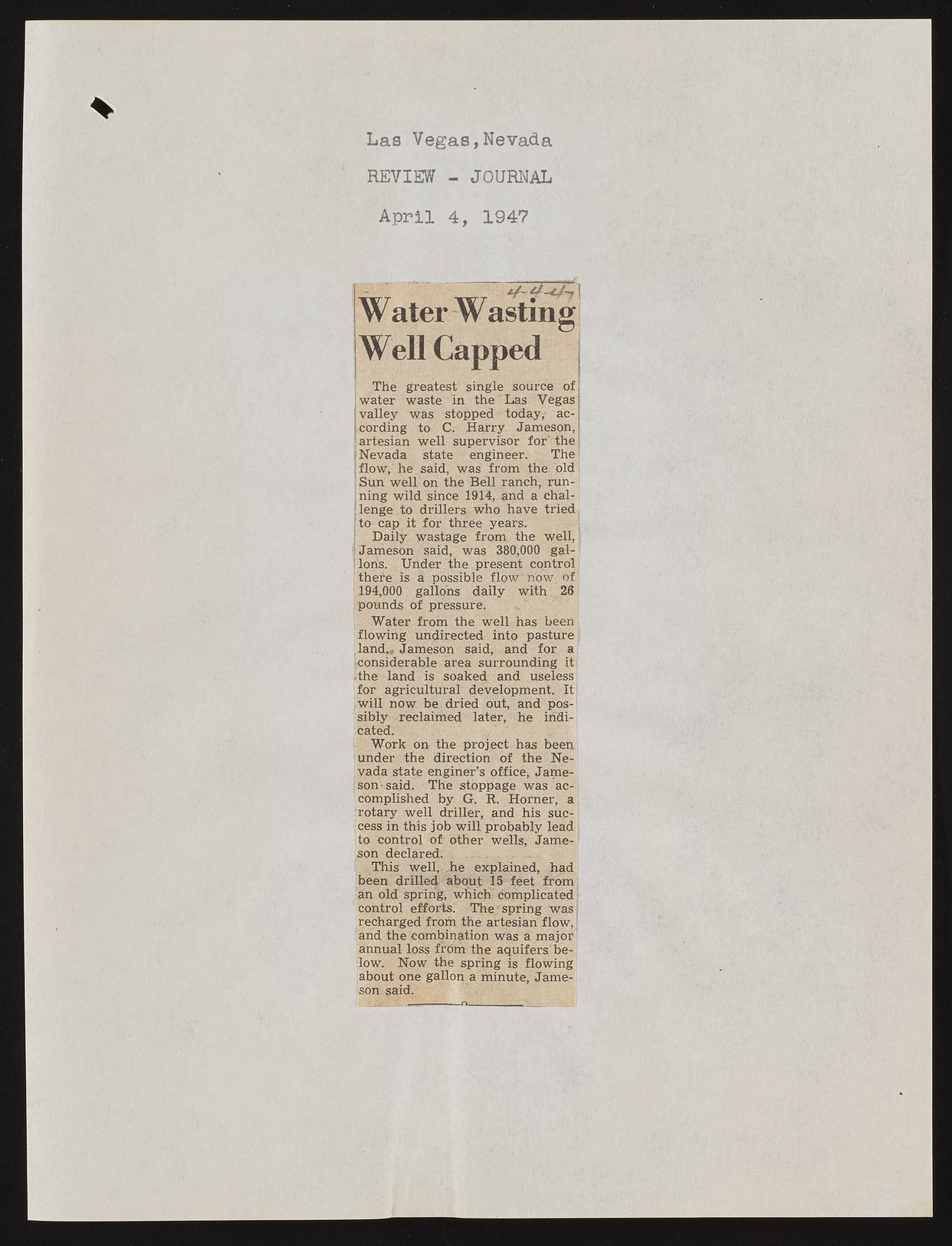Copyright & Fair-use Agreement
UNLV Special Collections provides copies of materials to facilitate private study, scholarship, or research. Material not in the public domain may be used according to fair use of copyrighted materials as defined by copyright law. Please cite us.
Please note that UNLV may not own the copyright to these materials and cannot provide permission to publish or distribute materials when UNLV is not the copyright holder. The user is solely responsible for determining the copyright status of materials and obtaining permission to use material from the copyright holder and for determining whether any permissions relating to any other rights are necessary for the intended use, and for obtaining all required permissions beyond that allowed by fair use.
Read more about our reproduction and use policy.
I agree.Information
Digital ID
Permalink
Details
Member of
More Info
Rights
Digital Provenance
Publisher
Transcription
L a s V e g a s ,N e v a d a REVIEW - JOURNAL April 4, 1947 W ater Wasting Well Capped The greatest' single source of ] water waste in the Las Vegas I valley was stopped today, according to C. Harry Jameson, artesian well supervisor for" the Nevada state engineer. The flow,'he said, was from the 'old Sun welT on the Bell ranch,, running wild since 1914, and a chair lenge to drillers who have tried , to cap it for three years. ! Daily wastage from the well, ! Jameson said, was 380,000 gallons. Under the present control there is a possible flow now of 194,000 gallons daily with 26 pounds of pressure. Water from the well has been flowing undirected into pasture land,, Jameson said, and for a •considerable area surrounding it •the land is soaked and useless for agricultural development. It .will now be dried out, and possibly reclaimed later, he indicated. Work on the project has been, under the direction of the Nevada state enginer’s office, Jameson said. The stoppage was accomplished by G. R. Horner, a rotary well driller, and his success in this job will probably lead to control of other wells, Jameson declared; L This well, ,he explained, had been drilled about 15 feet from an old spring*, which' complicated i control efforts. The’ spring was recharged from the artesian flow, and the combination was a major1 annual loss from the aquifers below, Now the spring is flowing about one gallon a minute, Jameson said.

